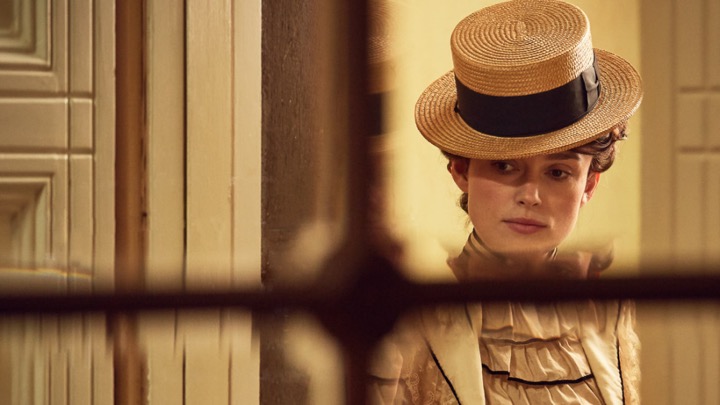“Colette” – The phrase “He said, She said” has pushed to the front of the country’s consciousness during the last week of September, and millions of Americans have staggered to the month’s finish, looking forward to the weekend and October. Anything to turn the page.
Director Wash Westmoreland’s picture is a figurative page-turner about the world-famous writer Sidonie-Gabrielle Colette or Colette (Keira Knightley) in a film defined by a troubled and colorful story of “He said, She wrote.”
Opportunities for women at the turn of the 20th century were limited, and Gabrielle (Knightley) was, unfortunately, no exception. A young woman from the French countryside, she fell in love with and married an older, established “literary entrepreneur” named Willy (Dominic West) at age 19 or 20, and they moved to the bustle of Paris in 1893.
Although Willy carries a cultured panache and aura of aristocracy-street cred, he has always struggled financially. He’s a man with champagne taste bankrolled on a beer budget. This is unbeknownst to Gabrielle, who walks into this marriage littered with Willy’s money issues and regrettably, his infidelity.
Little does Willy know that Gabrielle is the goose who pens the golden words. Just experimenting, she decides to write a story about her teen years and refers to herself as Colette when scribing the first draft of the adventures of Claudine in “Claudine a l’ecole”. Willy publishes it, and much to his and her surprise, her novel becomes a massive, massive hit in Paris, and bookstores cannot keep it on the shelves.
The problem? Willy is the named-author on the book, not Colette.
Over the course of a 1-hour 51-minute runtime, Westmoreland, Knightley and West document Colette’s and Willy’s successes during her early literary career, but the film also clearly details their marital distress and the secret that they hide from the world.
Colette, however, has another secret that would rock most households in 1900 or 1901, including the apartment buildings in the accepting, liberal city of Paris.
Knightley walks a complex balancing act.
Sure, Colette attempts to emotionally dedicate herself to Willy, but she also embraces her writing, fights for her voice, and explores relationships outside of her marriage, especially when her aforementioned husband gives her reasons to look elsewhere. Knightley projects a fearlessness and confidence, while simultaneously exudes a naïve-joy of a new explorer who discovers foreign tastes and touches for the first time. She does all of this while still shackled to old ideas and misogyny.
Set mostly in Paris, Willy and Colette dance through the exclusive art scene in gorgeous period settings, musical numbers and events, where tones of lavender and smoke blend with laughter and smiles.
Through it all, Colette embraces the outward appearances of success, while bursting to define her own journey. Released in time for an award season-journey, “Colette” does not quite feel like a Best Picture, Actor or Actress Oscar contender, but it does deserve serious consideration for costume design. Whether you know Colette’s work or not, Knightley does much more than mere justice to the famous writer’s legacy. While chronicling her story of “He said, She wrote”, “Colette” gratifyingly flows from pen to spoken word and back to pen.
⭐⭐⭐ out of ⭐⭐⭐⭐
Image credits: Bleecker Street; Trailer credits: Movieclips Trailers




